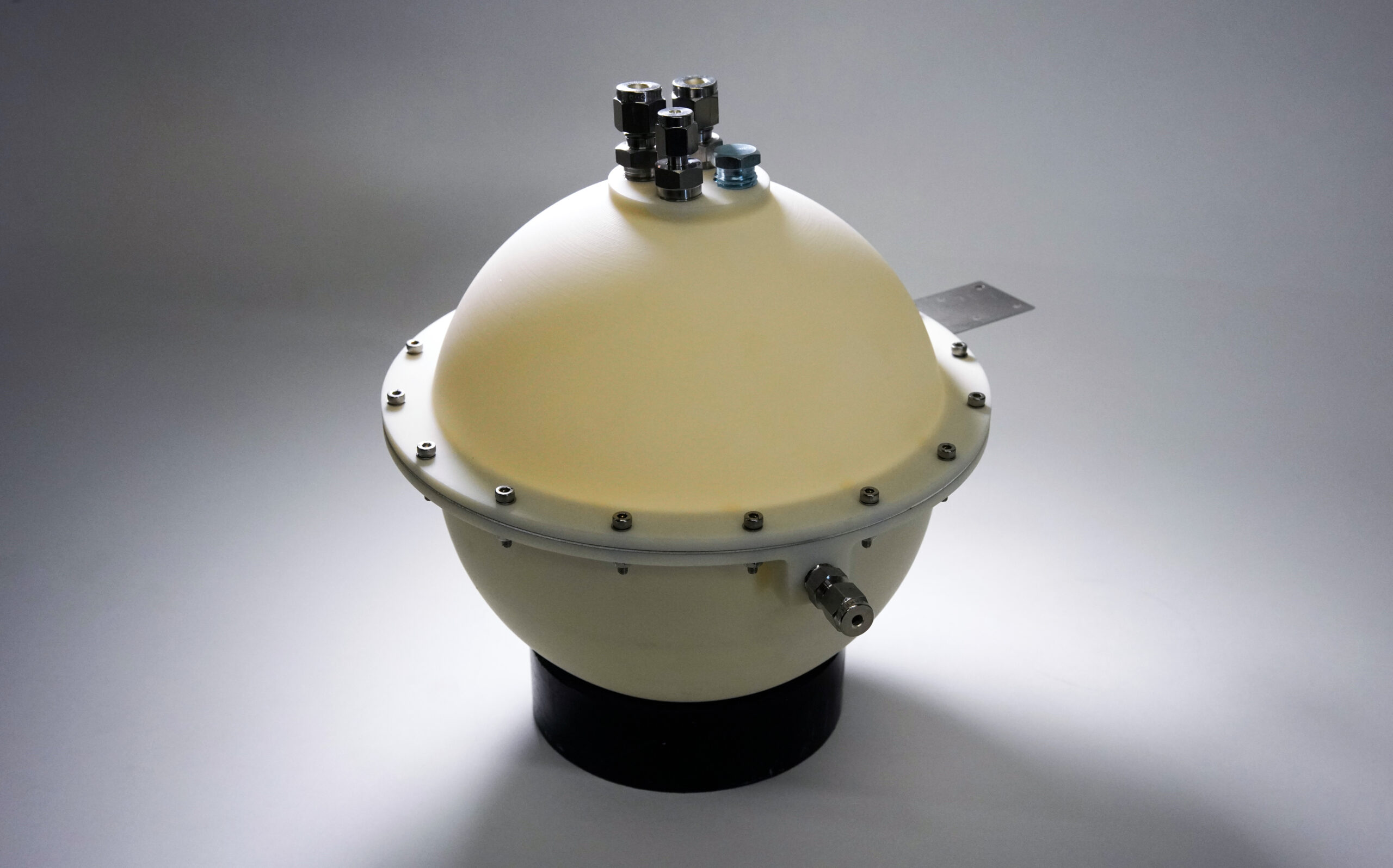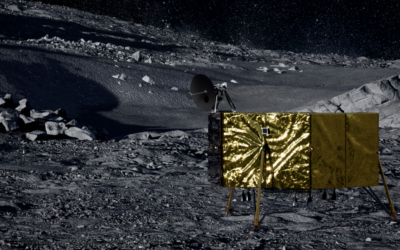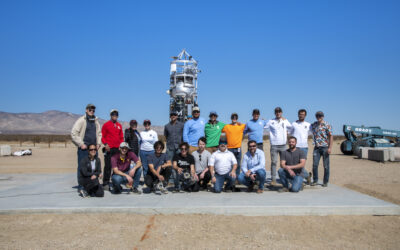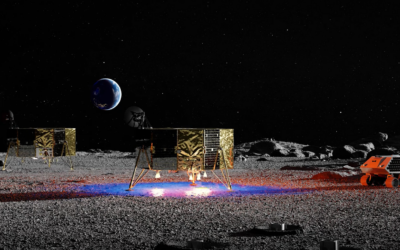Why return to the Moon? We hear this question a lot, but there’s not just one simple answer… there are many. For starters, the Moon offers a ton of value from a science, economic, and environmental standpoint.
The first samples brought back from the Moon during the Apollo era changed the way we thought about the solar system, the history of Earth, and our place in the universe, and there’s still so much science to uncover. From an environmental perspective, the Moon offers an abundance of resources, such as water, oxygen, and rare-Earth metals, that can be used to produce fuel, support manufacturing needs, and unlock new commercial applications. And from an economic standpoint, the global space market is expected to exceed $1 trillion and drive millions of high-paying jobs.
The Moon is also the gateway to our solar system. It has a harsh environment that we must solve for before we can explore further into the solar system.
That’s why Masten is building the technologies to enable sustainable access and utilization of the Moon. These solutions include new developments to mitigate hazardous lunar dust, navigate the lunar surface, and utilize lunar resources. The best part? These solutions can also be applied to Mars and other celestial bodies.
But in order to unlock value from the Moon (and beyond), we also have to enable long-term mission operations, and that’s easier said than done. The lunar day/night cycle includes 14 Earth days of continuous sunlight followed by 14 days of continuous darkness and extremely cold temperatures as low as -232°C (or -387°F). The challenge is flight computers and payloads typically require a minimum operating temperature of -40°C, so a huge mass of batteries is needed to stay warm.
Fortunately, Masten has a solution for that too… one that doesn’t require the need for batteries. Our Nighttime Integrated Thermal and Electricity (NITE™) system can produce both heat and power, enabling landers and payloads to survive the lunar night and extend operations in shadowed lunar regions, including craters and lava tubes. Keep reading to get the latest on our NITE system below!
Side note: You may know of NITE as the former name, MOWS (Metal Oxidation Warming System). Since we expanded the capabilities to include heat and power, we gave the system a new, equally fun name.

An external view of the NITE heat generation subsystem.
How does the NITE system work?
Masten’s NITE system is designed as a low-mass payload that can be attached to landers, rovers, and other lunar assets for both robotic and crewed missions. The system uses exothermic chemical reactions to deliver heat and power through the oxidation of metals using propellant margin from the lander’s propulsion system. It recycles reaction products to maximize thermal and electric energy return. NITE autonomously operates when temperatures fall below a specified threshold and can be deactivated during the lunar day to prevent overheating.
How does NITE compare to other solutions?
Current solutions for surviving extreme lunar environments include lithium-ion batteries and alkaline fuel cells. Although these solutions are reliable and cost effective, they impose significant mass penalties, have relatively short lifespans, and require complex thermal or fluid systems.
Radioisotope thermoelectric generators (RTGs) can serve as an alternative for longer missions, but they’re highly radioactive and impose severe constraints on cost, availability, and safety.
In contrast, NITE relies on controlled exothermic chemical reactions to generate heat and power, using safe, affordable reactants. The system is restartable on demand, low mass, and unaffected by lunar dust. And unlike the alternatives, NITE doesn’t require solar power to operate.
What are the benefits of the NITE system?
In a nutshell, Masten’s NITE system avoids the pitfalls of existing technologies available to survive the lunar night. Based on testing we’ve done on the NITE heat generation subsystem, here are the key benefits we’ve seen so far. We’ll have more results to share as we further develop the power generation subsystem.
- More heat, less mass: It produces significantly more heat (approximately 1900 Wh/kg) with a low-mass solution that’s more than 7x lighter than an equivalent battery for lunar night survival.
- Longer mission operations: It enables landers, rovers, and payloads to operate for 12 months or longer, depending on the oxidizer (e.g., lander propellant or lunar water) and mass allocated to the NITE system.
- Increased lunar accessibility: It enables operations in permanently shadowed regions, lunar poles, lava tubes, and other sunlight-deprived environments, providing thermal power at a temperature between -25° C and +25° C, as required by the payload.
- More cost effective: It saves ~$50 million+ in direct costs compared to nuclear solutions and saves ~$10 million+ in mass penalties compared to battery solutions.
- Safer alternative: It’s dust-proof and non-radioactive, enabling a safer alternative to nuclear and battery-based options.
We’ve made quite a bit of progress over the last few years. Following our NASA Small Business Innovative Research (SBIR) Phase I award in 2018, Masten developed the initial proof of concept and down selected the reaction chemistry. Now we’re close to wrapping up our SBIR Phase II award and finalizing the heat generation subsystem of the NITE system. We’ve been collaborating with our partners at Penn State University (PSU) and Honeybee Robotics to test the system’s capabilities. PSU’s Applied Research Lab (ARL) is offering their extensive experience with metallic oxidation reactions, and Honeybee Robotics is supporting various electronic systems.
Most recently, we wrapped up a few successful tests with PSU to evaluate different fuel types, mature the water delivery system, and test the system’s operability for long-duration missions.
What’s next for the NITE system?
We’re on track to finalize the NITE heat generation subsystem by mid-2022. Masten was also granted a NASA Tipping Point award to further develop the power generation subsystem and advance the overall technology readiness of the NITE system. This will get us one step closer to testing NITE in the lunar environment. So stay tuned for more updates… you may see NITE on the Moon soon!
Interested in deploying NITE for your next mission? Drop us a note at moon@masten.aero.


